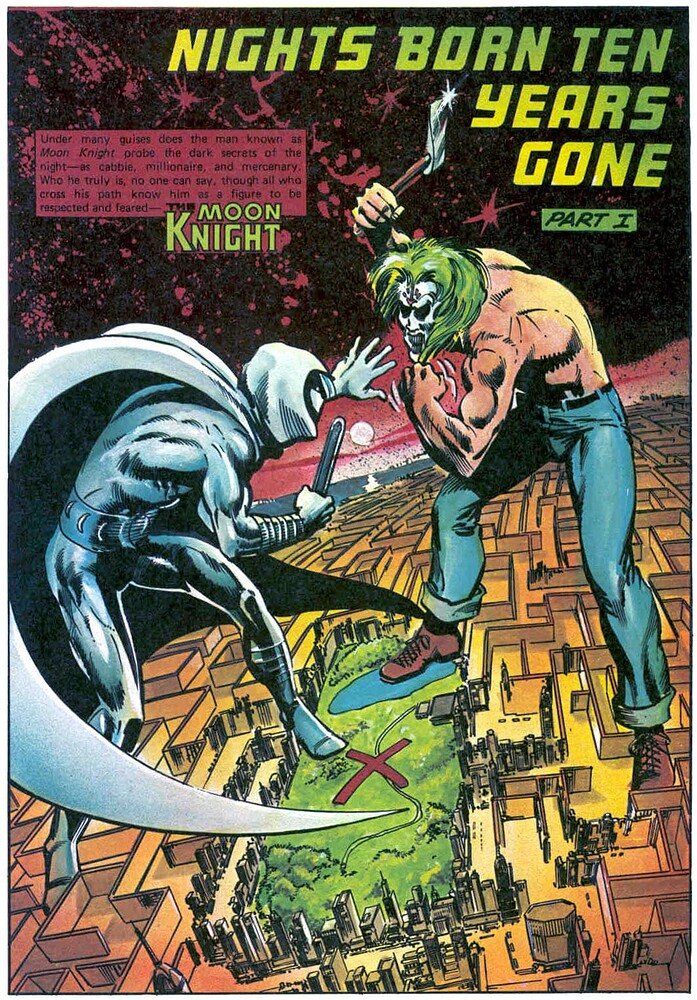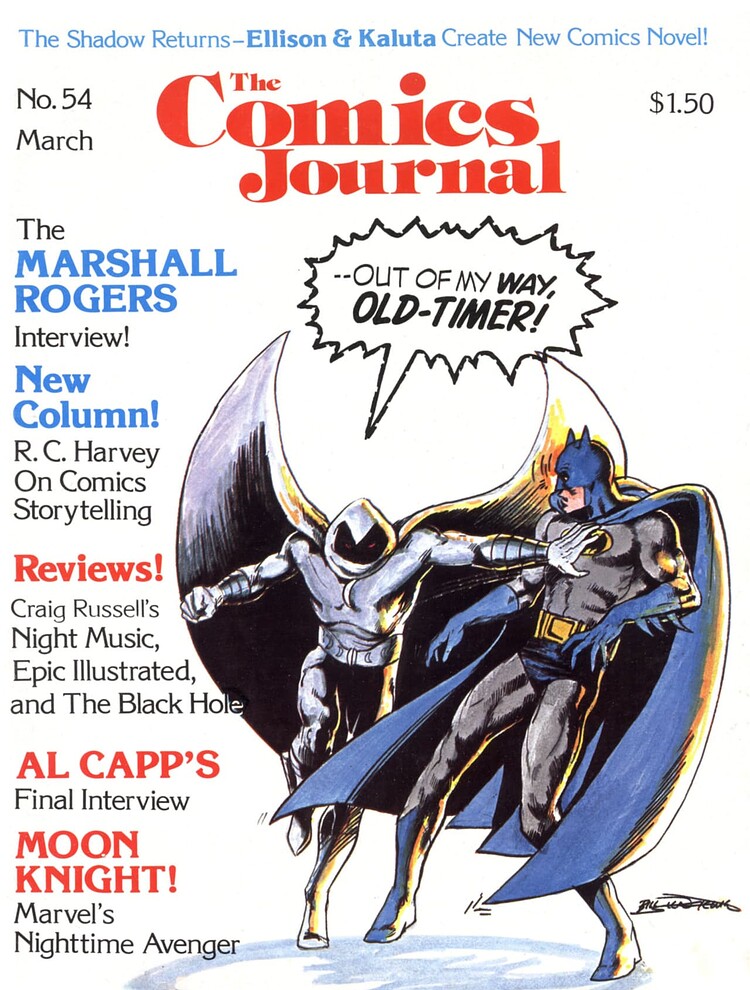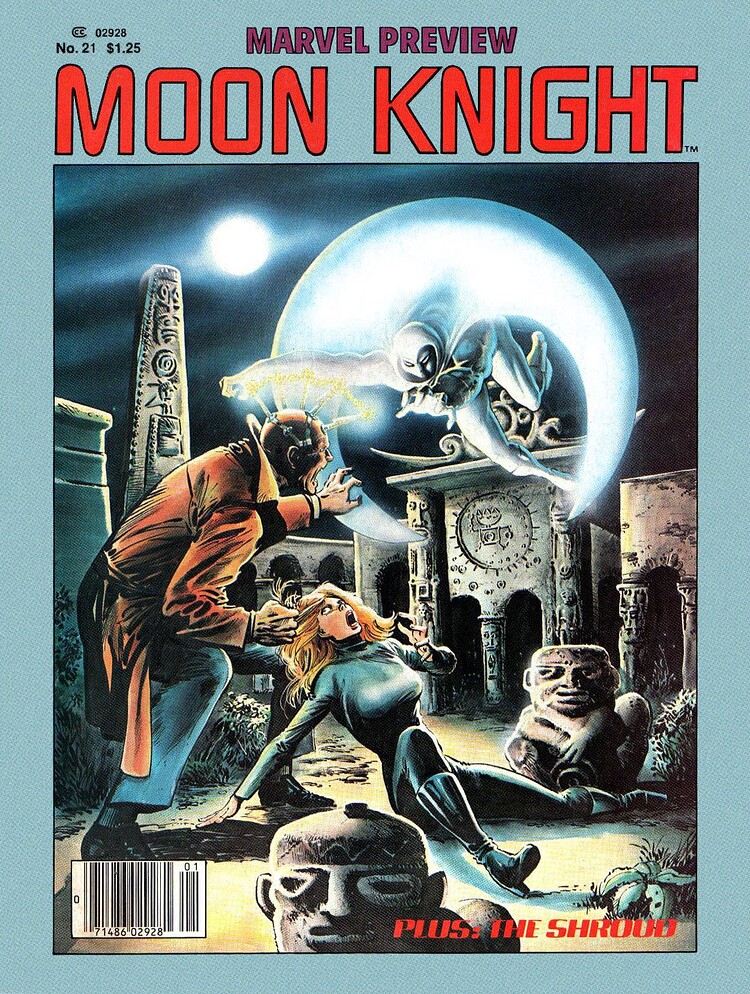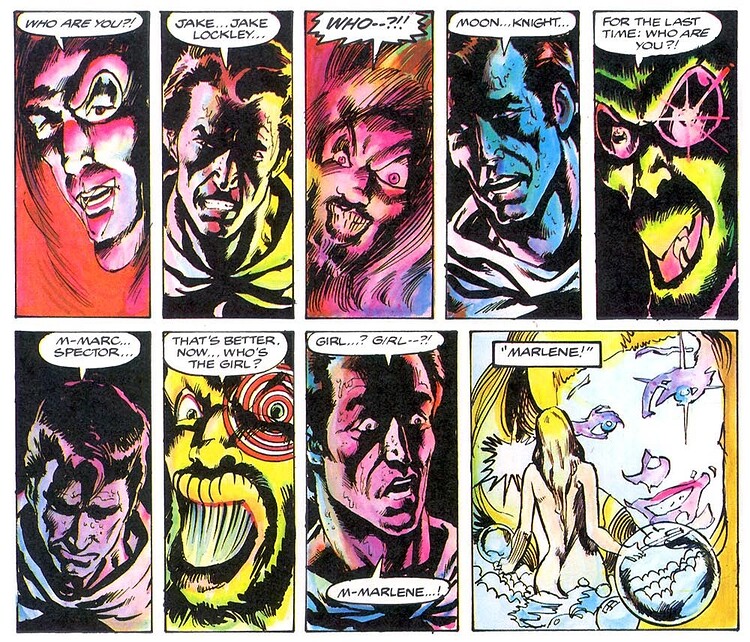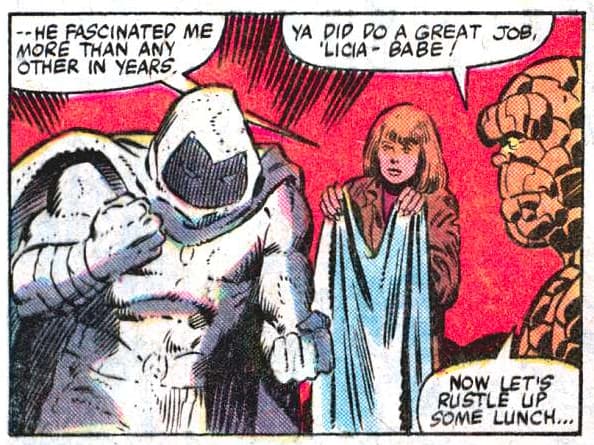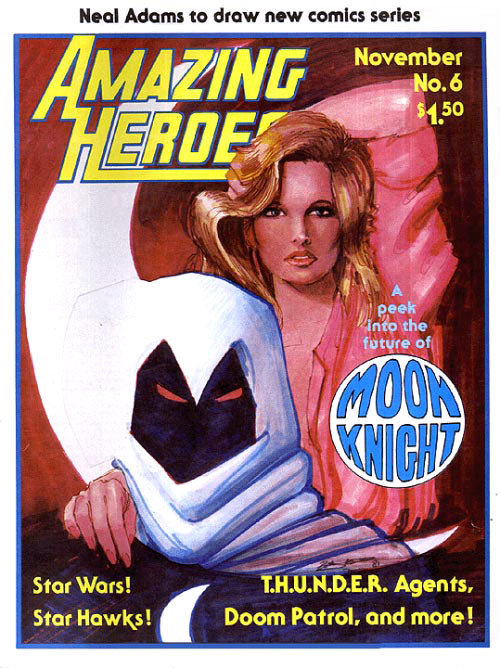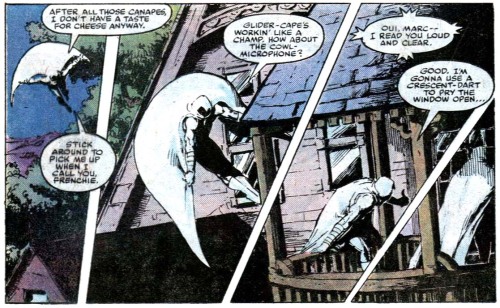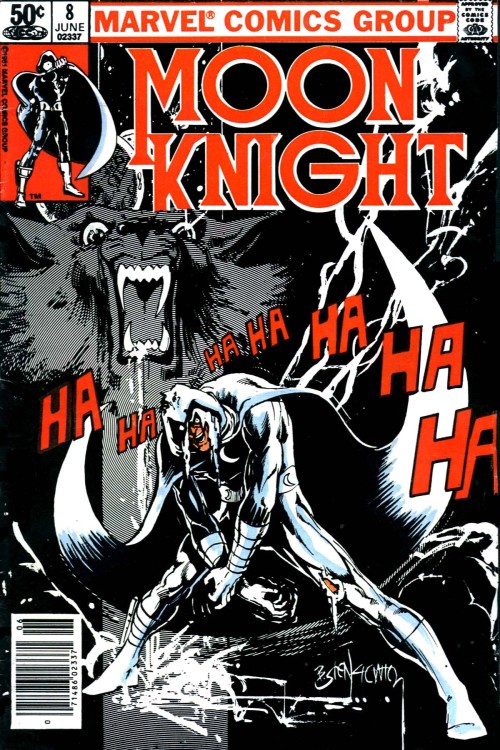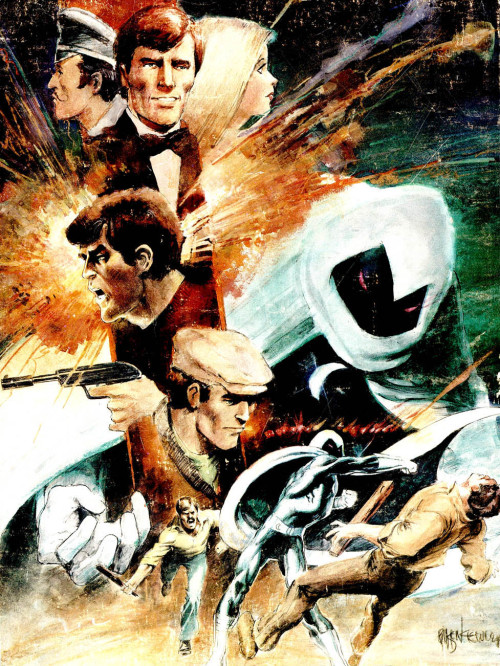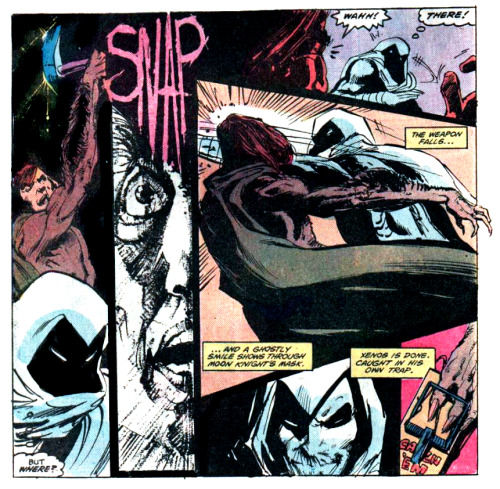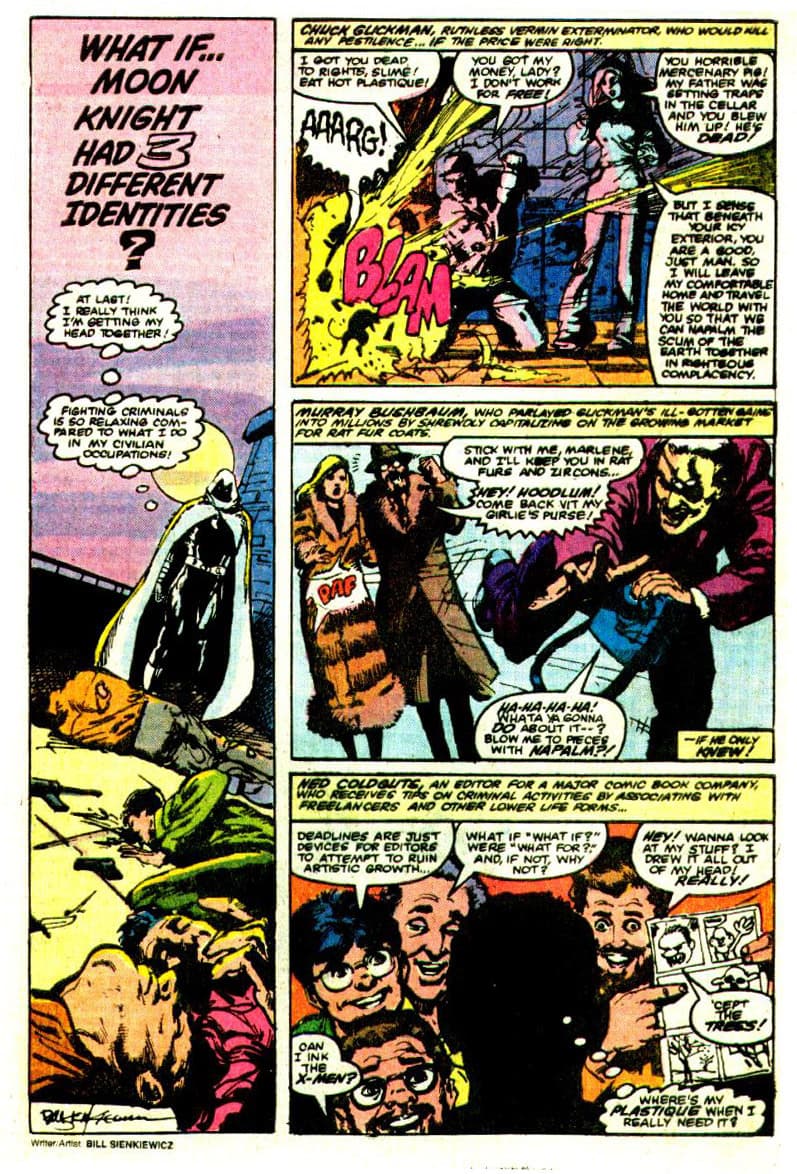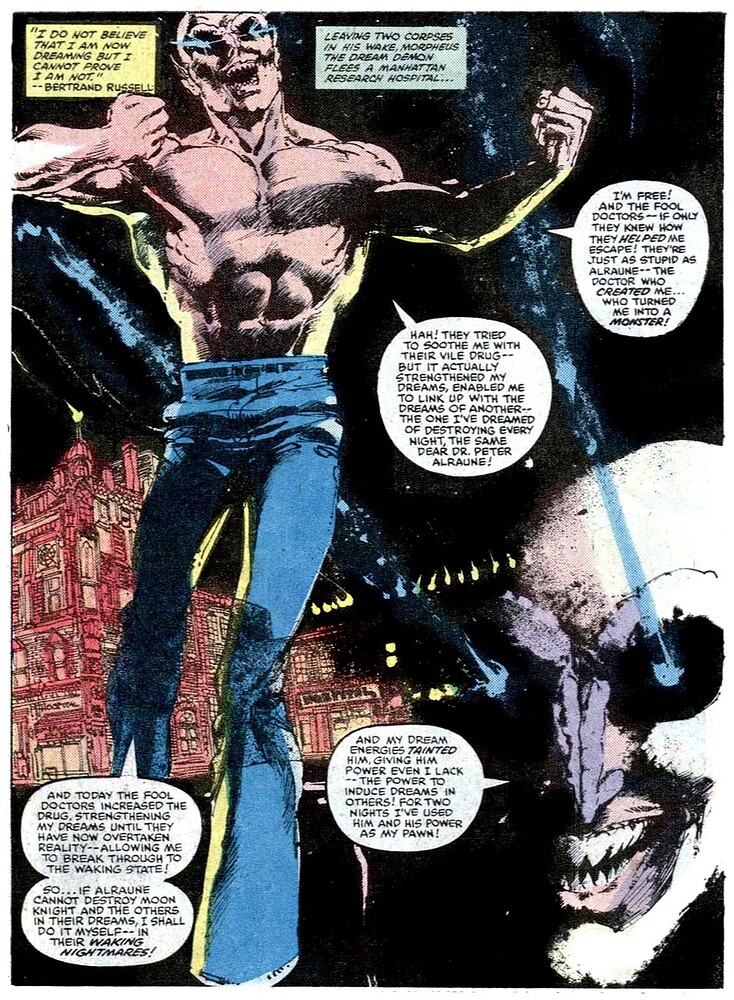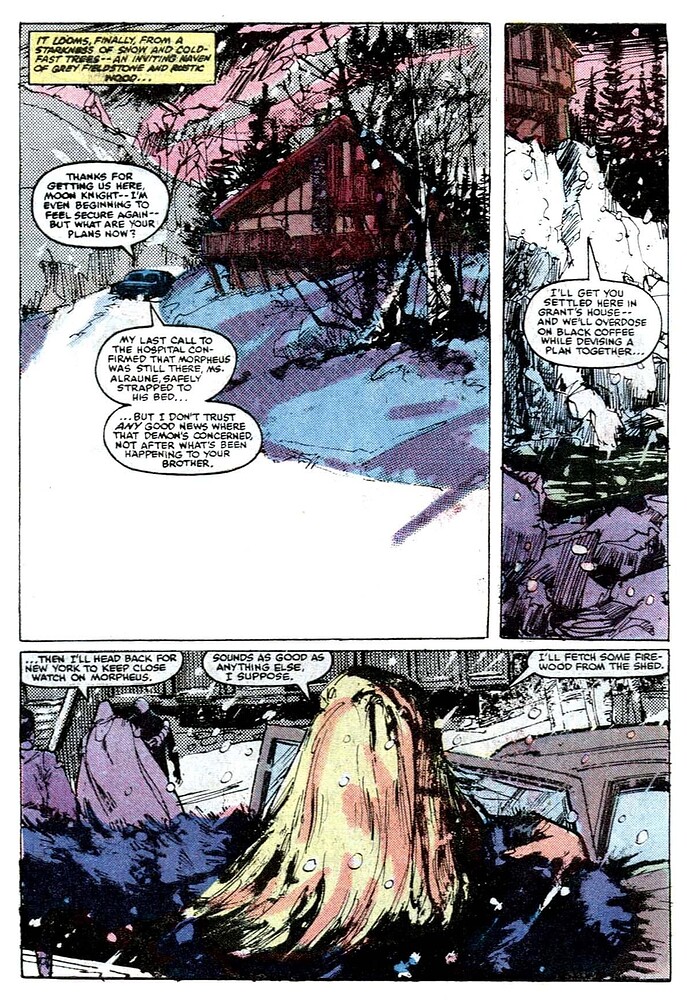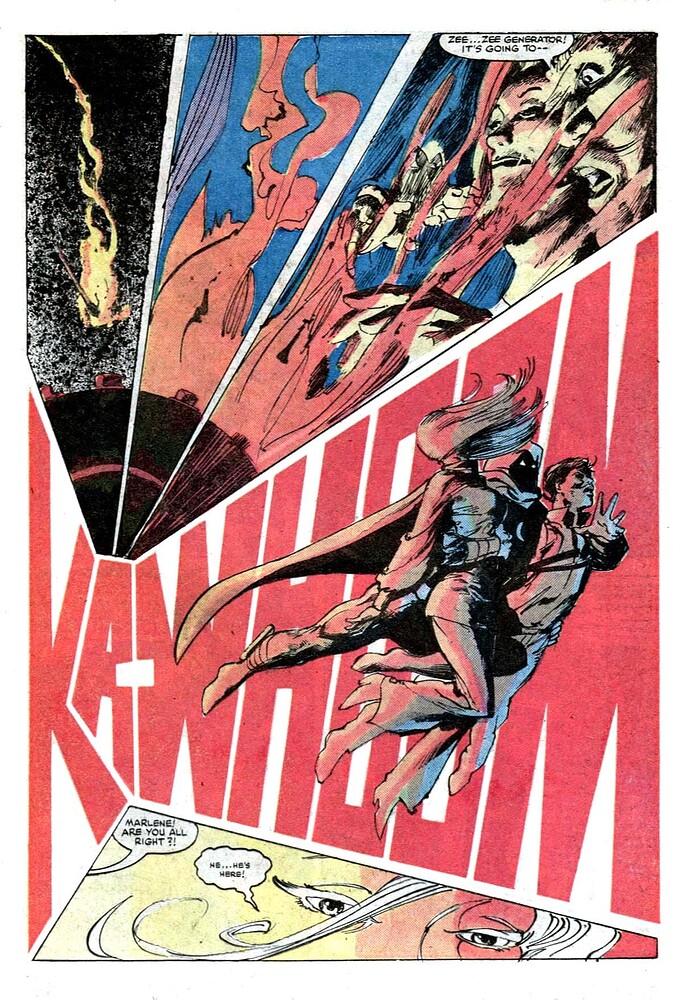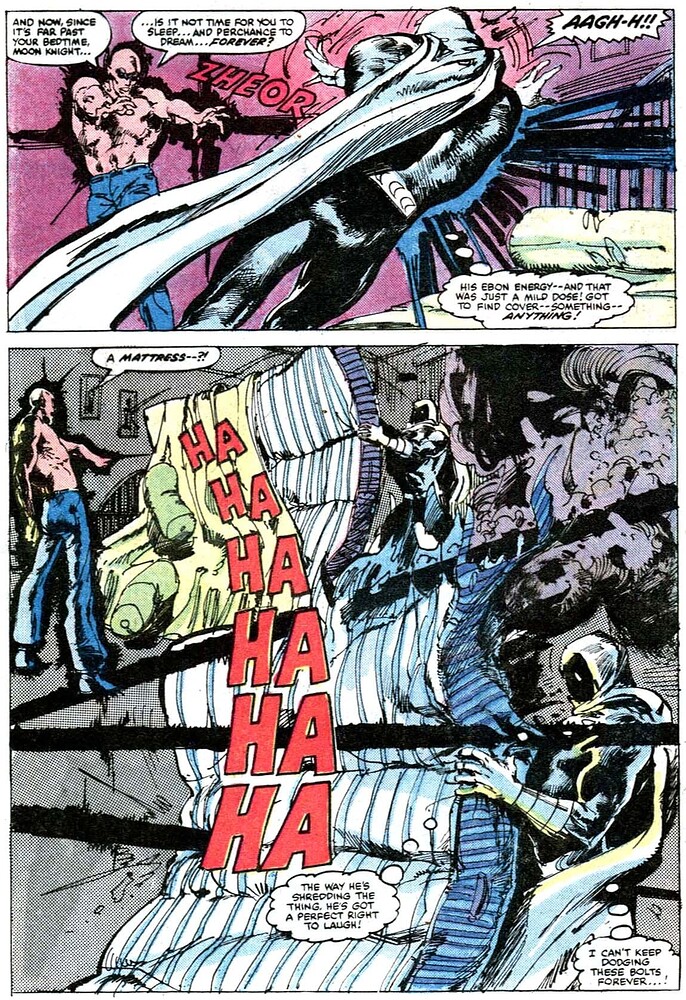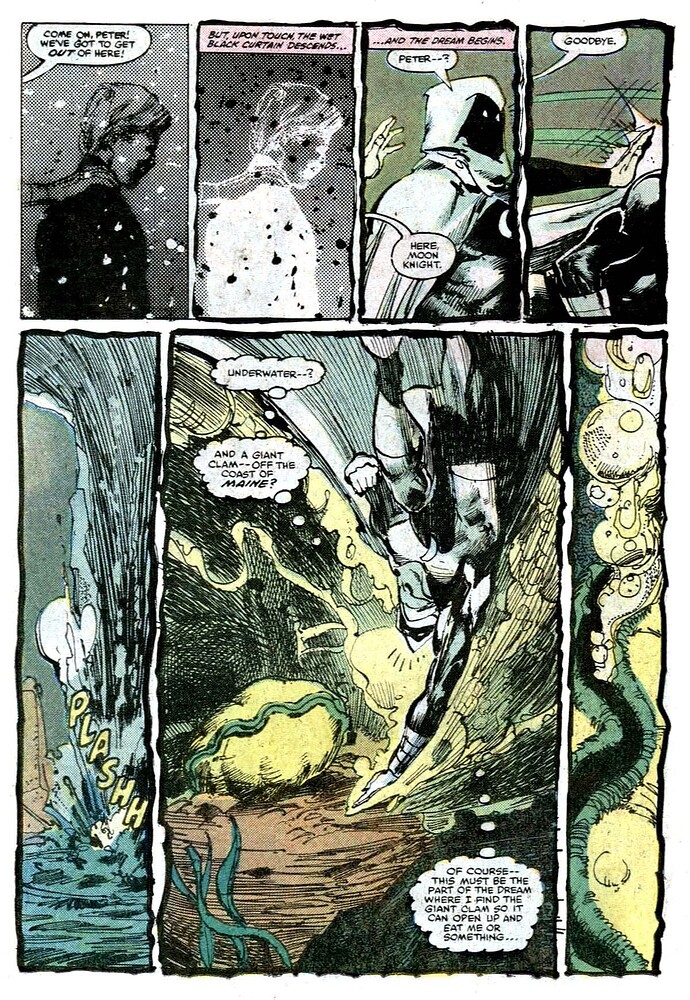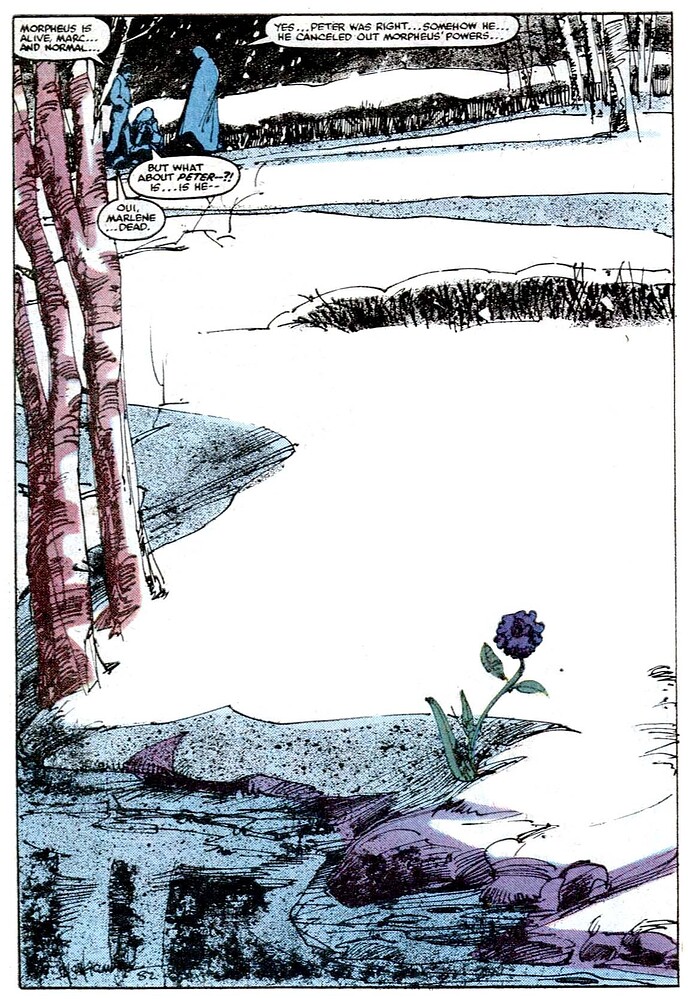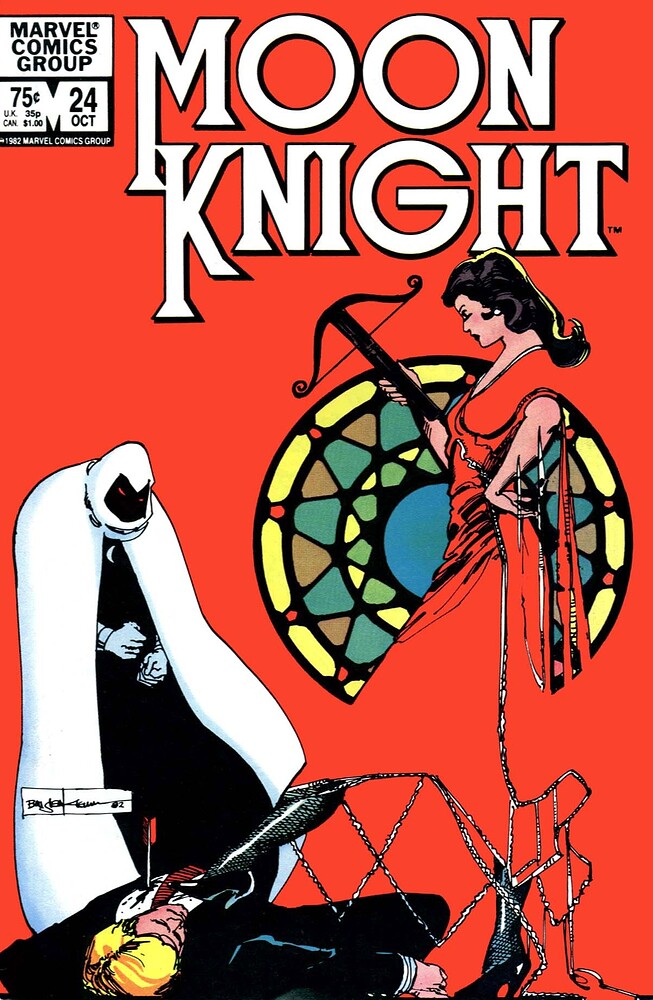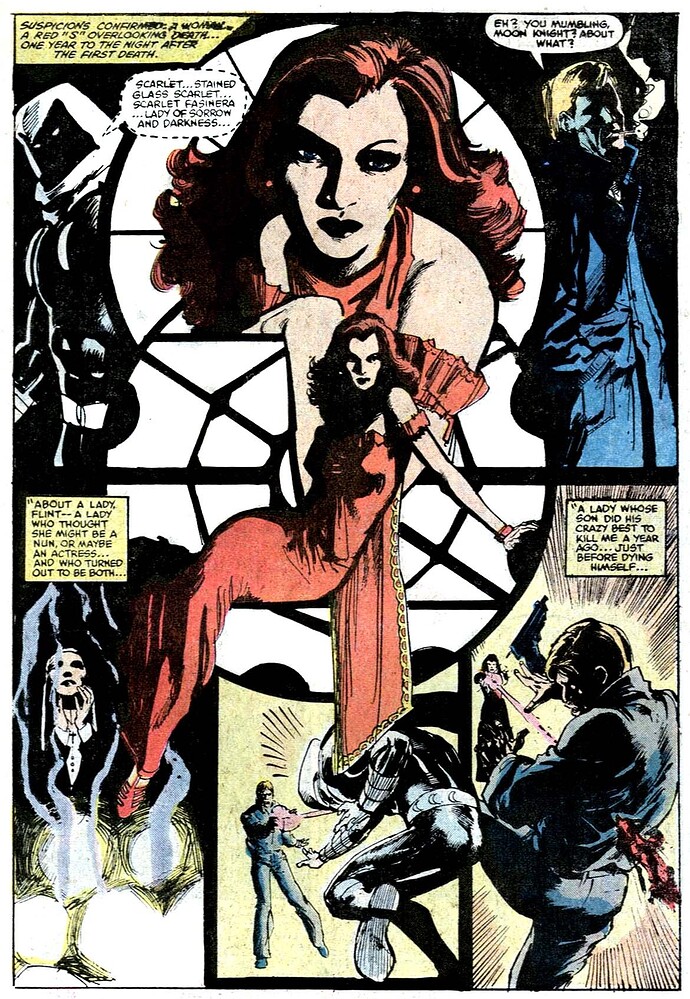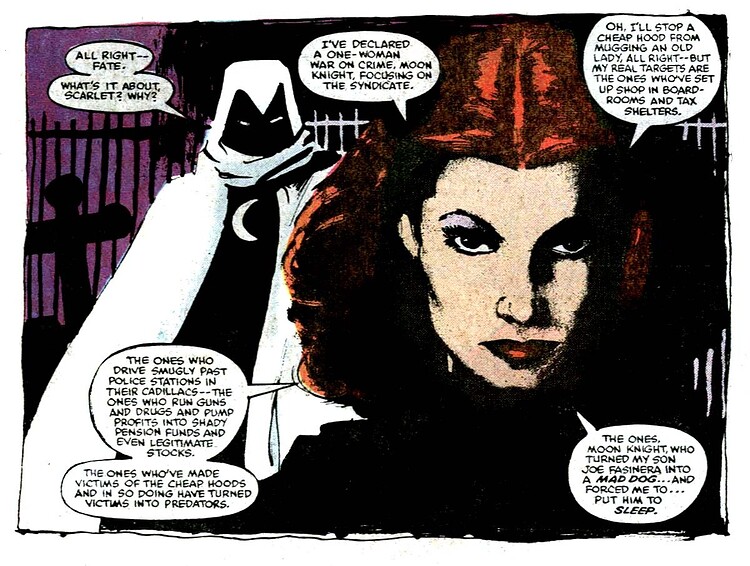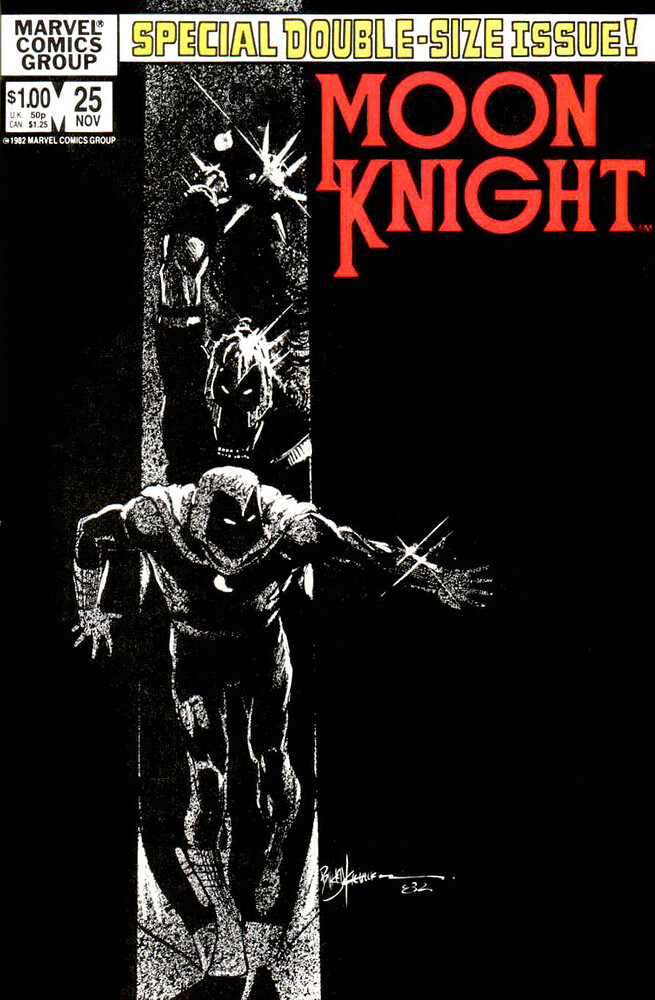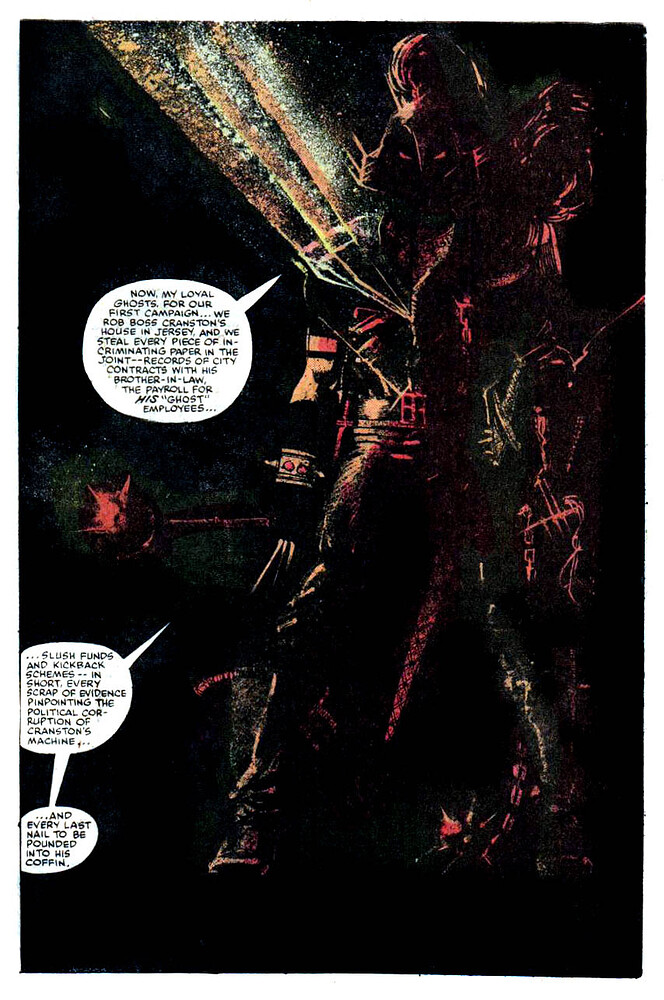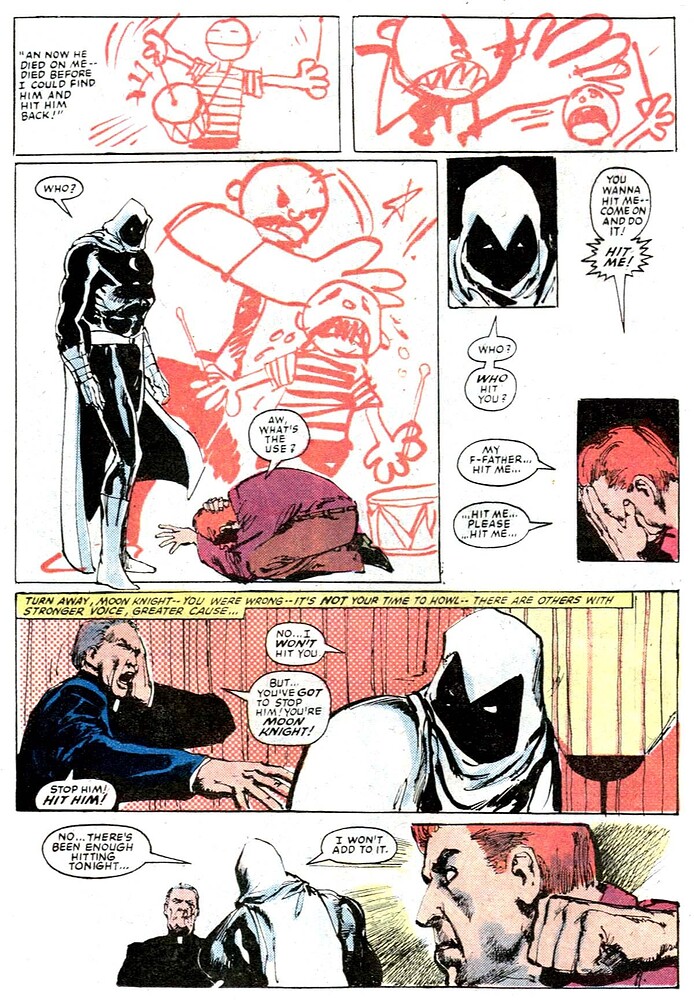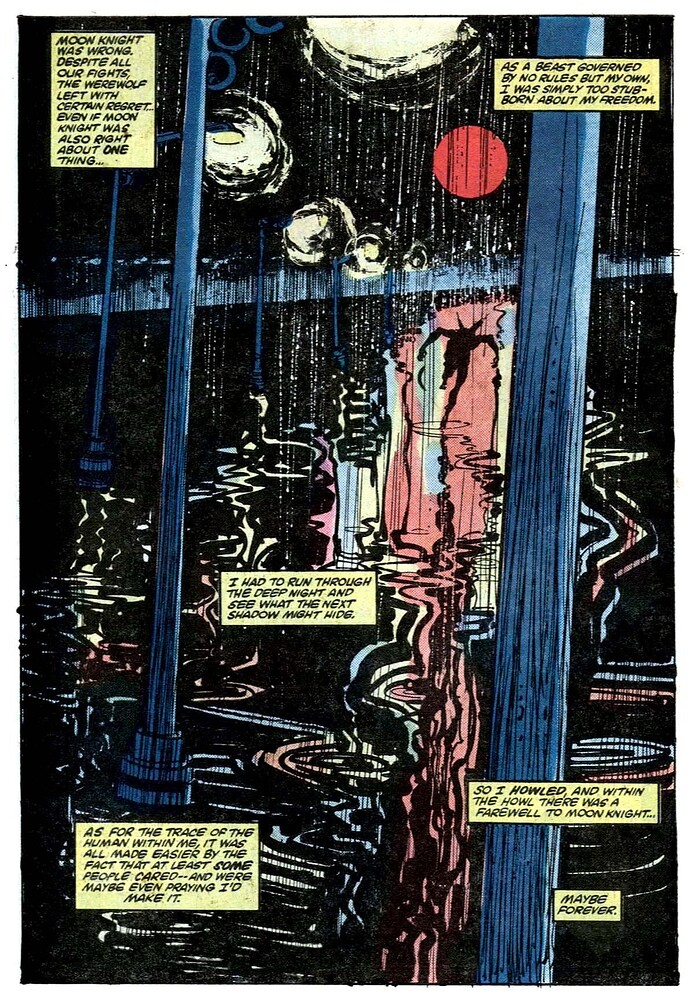Comic Artist Evolution à ce sujet :
[
Bill Sienkiewicz 1979: Hulk Magazine #13 (Color: Steve Oliff)I’ve got this kid fresh off the street and he draws like me. Is that a problem?
— Sienkiewicz’s recollection of Neal Adam’s call to Jim Shooter, lining up his first gig at Marvel which would kick off his professional career.
This gorgeous splash panel buried inside of a Hulk anthology magazine was Sienkiewicz’s arrival on the professional comics scene. Moon Knight had appeared a few times prior to this point, but in light of the Moon Knight series that would appear the following year, the pairing of the character with Sienkiewicz’s art just feels like the real beginning of Moon Knight.
What a debut!
](https://comicartistevolution.tumblr.com/image/86443261901)Bill Sienkiewicz 1979: Hulk Magazine #17-18 (Ink: Klaus Janson, Color: Steve Oliff)
Not subject to the Comics Code Authority, Hulk Magazine had the latitude to include more “mature” content than what was allowed in the comics, and I think this edgier tone in these formative years had an impact on both character and artist.
Bill Sienkiewicz 1980: Comics Journal #54
Neal Adams 1980: Comics Journal #56 (back cover)Hey kids, it’s a Comic Artist Evolution Two-in-One!
Okay… the Comics Journal thing. Sienkiewicz had been on the scene for all of a year and Moon Knight was still the better part of a year away from having his own series. So it admittedly took no small amount of chutzpah for an upstart character/artist to attempt to dethrone one of the greatest characters/artists who was so clearly an inspiration.
Sienkiewicz discussed Neal Adams’ influence in an interview with Comic Book Resources:
Studying Neal’s work, I hated it. I became obsessed however… and became fixated on it. It was like my intention was to be Neal. Not so much [to] be him. Not so much like the All About Eve scenario. But I wanted to be as good as because his work looked correct.
I had an appointment to just get looked at and walked out with the Moon Knight book, the series. That’s when the criticism started. And that was a rude awakening. [E]verything I had set my sights on for a survival mechanism and as a laudable goal [was dismissed]… [I]t upset me to the point of making me angry and making me feel invisible.
Neal has been nothing but wonderful and supportive from then till now. I don’t think he sees me as a clone anymore. I think he sees — and I see myself — as having broke away from that. As far as training and learning, I don’t think I could have picked anyone better.
I was also at art school before I did comics. I was starting to get into a lot of different painters. It was a school of many painters and artists and designers. I was a home. When I tried to get into comics, I pulled out the Neal mindset. I could kind of wax on the techniques pretty easily.
I found out many painters – not so much illustrators — the real abstract painting was something I really loved. That was part of the reason my style changed after the Neal Adams influence. I felt like I had to mind myself. I found myself open to any other influence, which is probably appropriate in a way. It’s like people dating to find the right mate to find [himself or herself].
Bill Sienkiewicz 1980: Marvel Preview #21
Inks: Klaus Janson, Tom Palmer and Dan Green; Colors: Steve OliffLast stop before Moon Knight appears in his own series later this year. You can also see that even before Sienkiewicz made his big stylistic change, some bits of surrealism has already made its way into his art.
Above: Cover (with Janson and Oliff), frontspiece, and interiors (with Palmer and Green)
Bill Sienkiewicz 1980: Moon Knight #1
Ink: Frank Springer / Color: Bob SharenAt long last, Moon Knight gets his own title (and an origin). Sienkiewicz sets the scene beautifully with a gripping splash panel depicting an exotic locale.
Bill Sienkiewicz 1981: Fantastic Four #229
Ink: Joe Sinnott / Color: George RoussosHis name is Moon Knight, Ben, and as a subject he fascinated me more than any other in years.
Hint, hint, readers!
In late 1980 and much of 1981, Sienkiewicz was pencilling Fantastic Four and Moon Knight at the same time (though it was usually hard to identify his work under Sinnott’s inks). He wrapped up his stint on the FF this year to focus on Moon Knight alongside the random one-off assignment and a myriad of covers.
Bill Sienkiewicz 1981: Amazing Heroes #6
It’s amazing how Neal Adams keeps popping up whenever we see Sienkiewicz’s work. I have to wonder what the editor’s intentions were to add “Neal Adams to draw new comics series” above an illustration of the characters from Sienkiewicz’s new comics series.
Bill Sienkiewicz 1981: Moon Knight #9
Color: Bob Sharen
Sienkiewicz utilizes the basic 9-panel grid to deliver an innovative clockwise-oriented layout.
Bill Sienkiewicz 1981: Moon Knight #9
Color: Bob SharenSienkiewicz utilizes the basic 9-panel grid to deliver an innovative clockwise-oriented layout.
[
Bill Sienkiewicz 1982: Moon Knight #15
Color: Christie Scheele
Moon Knight #15 marked a turning point not just for the series, but for the way mainstream comics were sold and marketed:
- The page count was increased from 22 pages to 27, and the price was raised from 50¢ to 75¢.
- It eliminated interior advertising.
- It was the last issue of the series to ship without the Comics Code Authority seal.
- It was was no longer sold to newsstands, available only through the direct market.
This select market brought Moon Knight back to the status Moench and Sienkiewicz enjoyed when their Moon Knight stories were included within anthology magazines and gave Sienkiewicz more latitude to push the kind of art that could appear in a comic book.
](https://comicartistevolution.tumblr.com/image/87344484516)Bill Sienkiewicz 1982: Fantastic Four Roast #1, What If…? #34
1982 was a year for Marvel to poke a little fun at itself. Nearly everyone at Marvel contributed to one or both of these books and it was especially fun to the lighter side of some of the more “serious” creators. I particularly love that Sienkiewicz wrote his own Moon Knight bit for What If?
Bill Sienkiewicz 1982: Moon Knight #23
Color: Christie ScheeleHere .
This is the tipping point.
Sienkiewicz tells Katherine Keller in an interview for Sequential Tart:
…from that point on, somewhere around issue 25 of Moon Knight, right before “Hit It,” I started to try out other things and look at different illustrators and soaked up all the things I had missed, or seen in art school. I felt like a sponge soaking up things from all kinds of sources and trusting my own voice, my own vision a little bit more.
So I went from being a clone to trying so many different things. Because comics was viewed as an art form not worthy of respect, especially where I grew up, I thought that the only way to make them respectful, was to do something I felt good about, and that meant trying collage and that kind of things. I wasn’t trying to change anything, I was just trying to validate what I was doing. To show other people, and also my father and mother, that it wasn’t a waste of energy.
…it was an incredible period of deconstruction, it was probably one of the worst periods of my life at that point, but it was an absolutely essential period of transition. I went from wanting to do work like Neal, to wanting to do work not like Neal. And yet in the equation, Neal having been such a powerful figure to me, Neal was as powerful in the negative as he had been in the positive. It was a difficult transition for me, and I see it in a lot of other artists coming up whom I have influenced, and I can understand it — I just hope they are also able to move on. I have a really good relationship with Neal today, and when I look at his work I don’t think I could have chosen a better mentor/style.
Bill Sienkiewicz 1982: Moon Knight #24
Color: Christie ScheeleAnd the art just keeps coming
Bill Sienkiewicz 1982: Moon Knight #25
Color: Christie ScheeleBill Sienkiewicz 1982: Moon Knight #26
Color: Christie Scheele“Hit It” is easily the high point of the initial run of Moon Knight. It tells a stylish and sophisticated story about the consequences of child abuse and how it perpetuates through the years. The reason the plotting and artwork fit together so seamlessly is because Sienkiewicz plotted it! Sienkiewicz discusses it along with the experience working with Moench in interviews with CBR and manwithoutfear.com.
Other writers I worked with up to that point were all great writers, but they seemed to write more “cerebrally” and I felt that there was a level of true collaboration missing. So except for “Hit It!” (Issue 26 of Moon Knight) - which was my story line, plot etc. with Doug [Moench]’s dialoging my story (the credits didn’t reflect this accurately because of deadline problems), I was basically a set of hands.
…
I loved working with Chris and Doug Moench and other writers. I was itching to have a lot more latitude still. …[I]ssue 26, with the drummer, the music issue in Moon Knight. That was essentially my story. Doug’s pretty much the dialogue, but that was my whole concept and execution. I wanted to get more of that in my work. That’s what I needed to do.
Bill Sienkiewicz 1983: Moon Knight #29-30
Color: Christie ScheeleAfter the story in issue #26, ‘Hit It,’ I felt that I’d climbed as high as I could with MK for now. I knew I couldn’t sustain it…
— Bill Sienkiewicz to Jim Shooter, on leaving the book
The last story Sienkiewicz drew for the series was a two parter that reunited Moon Knight with the character in whose story he first appeared. Sienkiewicz brings a great atmosphere to the story and provides us with a kick-ass Werewolf by Night that evolves the character beyond his original Lon Chaney-inspired incarnation.

